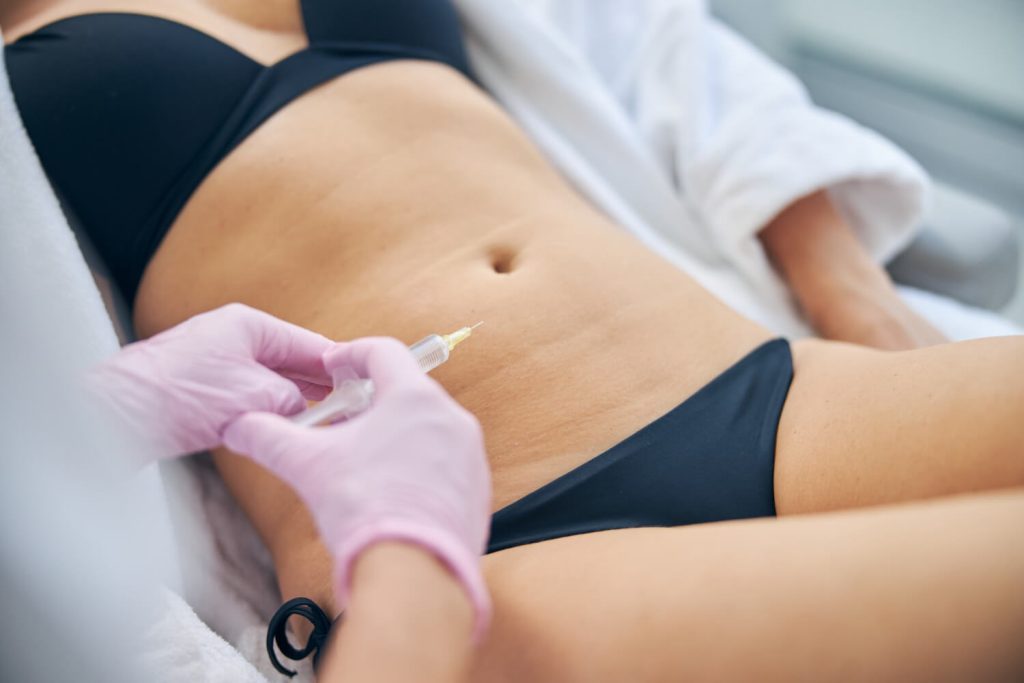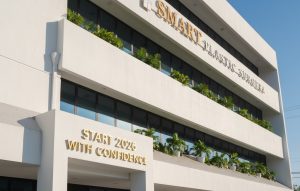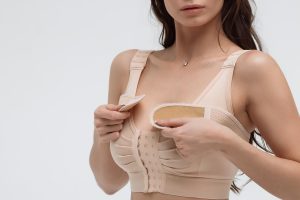People looking to improve skin firmness without going through extensive surgery often hear about Renuvion J-Plasma. The name keeps coming up in clinics across the United States, especially among patients who already had liposuction or deal with mild to moderate skin laxity.
With so many treatment options, a few questions show up: what exactly is Renuvion J-Plasma? How does the device work under the skin? Why do so many people consider it after weight loss or body contouring surgery?
Before choosing this type of treatment, understanding how Renuvion J-Plasma works may help assess whether it fits your situation.
This article shares clear information about the technology, where it’s commonly used, and what to expect from the process.
What is Renuvion J-Plasma?
Renuvion J-Plasma combines two technologies used for years in U.S. medical practice: radiofrequency energy and helium gas.
The interaction of these two elements creates a controlled form of energy that works just under the skin. The goal of the procedure includes tissue contraction and improved skin firmness in the treated area.
The Renuvion J-Plasma device became known for being used in minimally invasive procedures. Unlike a traditional lift that requires large incisions, this technique uses thin cannulas inserted under the skin. The equipment heats the tissue quickly and precisely, without affecting surrounding structures.
Aesthetic doctors use Renuvion J-Plasma in skin tightening and body contouring treatments. The controlled helium plasma release helps trigger a skin retraction response. The device also works as a complement to liposuction, especially in areas prone to loose skin.
In the U.S., the use of Renuvion J-Plasma technology follows safety regulations from authorities such as the FDA. Plastic surgery clinics apply it under specific protocols, depending on the body area and patient profile.
How does Renuvion J-Plasma work on the body?
During the procedure, the doctor inserts a thin cannula just under the skin. The Renuvion J-Plasma device releases helium gas combined with radiofrequency energy. When both elements interact, they instantly generate a cold plasma that delivers controlled heat to the subdermal tissue.
This rapid heating causes near-instant collagen fiber contraction in the treated area. The tissue responds with tightening, which leads to a firmer and more contoured appearance. Renuvion J-Plasma does not directly affect the outer skin surface, which usually allows for faster recovery when compared to lasers or open surgery.
The doctor can adjust the energy level during the treatment. That flexibility makes it safe for use on multiple areas of the body, such as the abdomen, back, arms, neck, and thighs. The procedure often lasts between 30 to 90 minutes, depending on the treatment area.
The Renuvion J-Plasma technology delivers targeted energy with precision. For that reason, the risk of thermal damage to surrounding tissues stays low, which appeals to patients seeking subtle changes and visible improvements.
Where can Renuvion J-Plasma be used?
Renuvion J-Plasma is commonly applied to different body areas, especially in patients looking to improve skin tightness without major surgery. These are the most treated regions in U.S. clinics:
- Neck and under-chin area: Addresses mild laxity and improves contour along the neck.
- Lower face and jawline: Targets loose skin under the cheeks and enhances jaw definition.
- Upper arms (“bat wings”): Reduces skin laxity often seen after weight loss.
- Abdomen: Used after liposuction or for mild laxity following pregnancy.
- Upper back (bra line area): Treats folds or skin excess in the upper back.
- Inner thighs: Focuses on sagging skin between the legs, especially after weight reduction.
- Knees: Improves skin texture and firmness around the knee joint.
These Renuvion J-Plasma applications may be performed as standalone procedures or combined with other surgeries. The choice of area depends on clinical evaluation and the patient’s goals.
Who qualifies for Renuvion J-Plasma?
Not every patient fits the ideal profile for a Renuvion J-Plasma procedure. Clinics in the United States follow clear criteria to recommend this treatment.
Here are the most common profiles for patients who qualify for Renuvion J-Plasma:
- People with mild to moderate skin laxity: Ideal for those without severe excess skin that requires full surgery.
- Post-liposuction patients: Used to enhance skin firmness and definition after lipo procedures.
- Patients with recent weight loss: Helps tighten areas with loose skin after weight reduction.
- Individuals in good general health: A basic medical check is done to confirm stability.
- People looking to avoid large scars: Sought by those who prefer less invasive treatments with minimal incisions.
- Ages between 30 and 60 (average in U.S. clinics): Most common age range among patients undergoing Renuvion J-Plasma.
- Patients with realistic expectations: The procedure improves firmness but doesn’t replace a surgical lift for severe cases.
Each case is evaluated individually. Before recommending Renuvion J-Plasma, doctors assess skin elasticity, fat volume, and any past procedures.
What happens during a Renuvion J-Plasma procedure?
The Renuvion J-Plasma procedure follows a standard step-by-step process in U.S. clinics. Duration and preparation may vary based on the area treated, but the typical flow includes:
- Initial consultation with the surgeon: Skin assessment, health review, and treatment area planning.
- Skin marking and preparation: The team marks target areas and applies antiseptic solutions.
- Anesthesia administration: Local anesthesia, light sedation, or general anesthesia is used depending on the treatment plan.
- Cannula insertion: Small entry points are made in the skin to insert the thin Renuvion J-Plasma cannula.
- Plasma energy release: The device combines helium gas and radiofrequency to create cold plasma. The energy is delivered directly under the skin.
- Controlled movements: The surgeon moves the cannula in short, precise paths to heat and tighten the internal tissue.
- Closing the entry points: Small dressings are applied over the insertion sites.
- Start of recovery: The patient receives post-op instructions and, in most cases, returns home the same day.
The Renuvion J-Plasma procedure usually takes between 30 and 90 minutes. Larger areas or combination treatments may extend the total session time.
What to expect after the procedure?
After undergoing the Renuvion J-Plasma procedure, the patient usually leaves the clinic the same day with light dressings on the treated areas.
During the first 24 to 48 hours, mild swelling, slight discomfort, and a warm sensation under the skin may occur. These reactions often decrease with prescribed medication and moderate rest.
Recovery rarely requires extended downtime. Many patients return to light activities within a few days. However, physical exercise and sun exposure stay restricted for a longer period, as guided by the doctor. Compression garments may be recommended, especially if combined with liposuction.
The results of Renuvion J-Plasma don’t show up instantly. Tissue tightening continues in the following weeks, with noticeable firmness improvements typically appearing between the first and third month. Collagen remodeling can last up to six months, contributing to a more lasting result.
Follow-up visits are scheduled to monitor progress and ensure the recovery stays on track. Outcomes vary depending on age, skin type, and the area treated, so personalized evaluation helps align expectations.
Benefits of Renuvion J-Plasma treatment
Patients undergoing Renuvion J-Plasma often report specific advantages over other skin tightening methods. Below are the most common benefits seen in U.S. clinics:
- Visible skin tightening in areas with mild to moderate laxity
- Can be combined with liposuction in the same session
- Smaller incisions and minimal scarring compared to traditional lifting
- Faster recovery with early return to light activities
- Targeted energy application with minimal damage to surrounding tissue
- Ongoing collagen remodeling for months after treatment
- Suitable option for patients avoiding extensive surgery
Comparison table: Renuvion J-Plasma vs. Surgical lifting vs. Laser skin tightening
| Feature | Renuvion J-Plasma | Surgical lifting | Laser skin tightening |
| Invasiveness | Minimal | High | Minimal |
| Type of anesthesia | Local or sedation | General | Local |
| Incisions | Small | Large | None |
| Average recovery time | 3 to 7 days | 2 to 4 weeks | 1 to 2 days |
| Suitable for severe skin laxity | Partially | Yes | No |
| Visible scarring | Minimal | Present | None |
| Can be combined with liposuction | Yes | Yes | Rarely |
| Long-term collagen remodeling | Yes | Partial | Partial |
Where to get Renuvion J-Plasma in Miami
Miami has become one of the top destinations for advanced aesthetic procedures in the United States.
The city is home to clinics that specialize in body contouring and skin tightening, with growing demand for technologies like Renuvion J-Plasma.
Many patients choose to undergo Renuvion J-Plasma in Miami due to the experience of local surgeons, the quality of medical facilities, and the convenience of combining treatments in one place. .
Smart Plastic Surgery, based in Miami, offers Renuvion J-Plasma with personalized care and protocols tailored to each patient’s profile. The medical team evaluates the target area, combines the procedure with other treatments when needed, and supports the patient through every stage.
Want to find out if Renuvion J-Plasma is the right fit for you?



